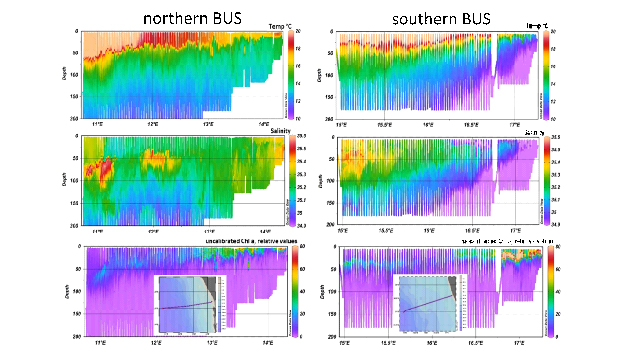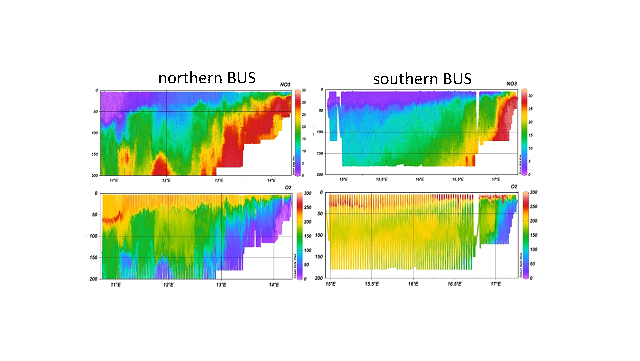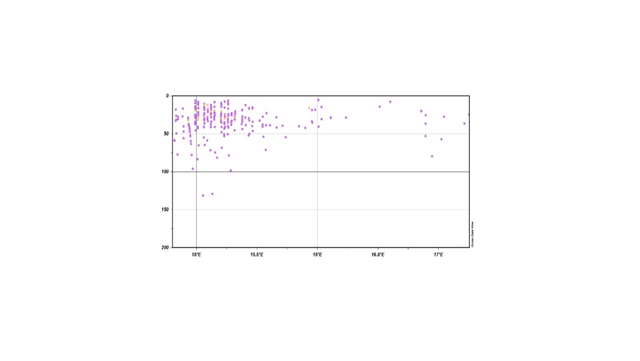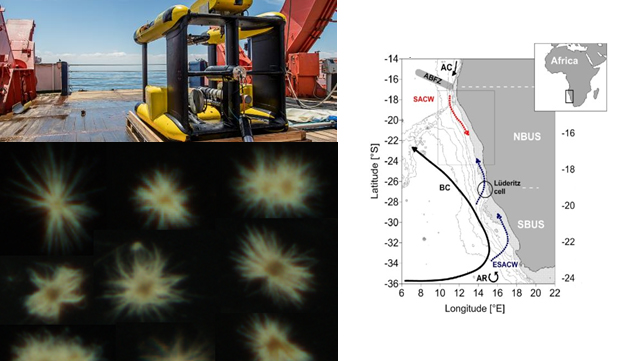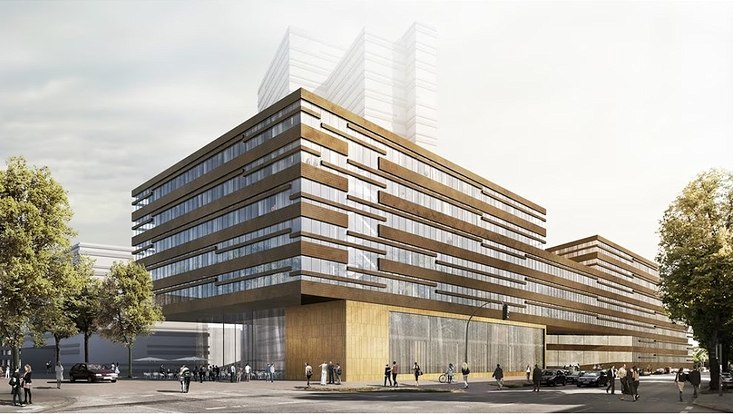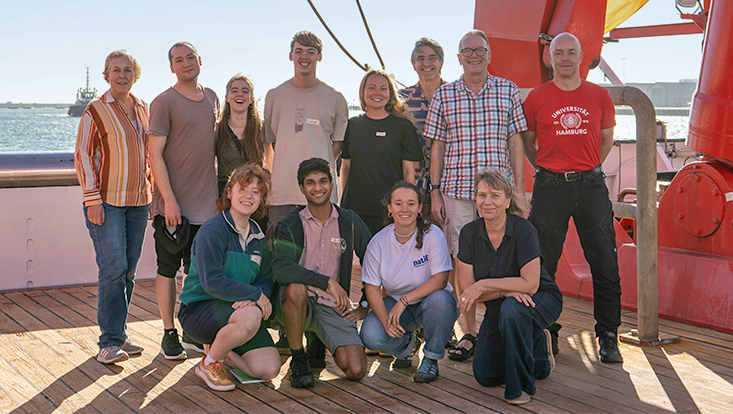Meteor cruiseIn-situ measurements of abiotic and biotic parametersTRAFFIC Subproject 1
30. November 2020, von Bettina Martin, André Harmer and Rolf Koppelmann
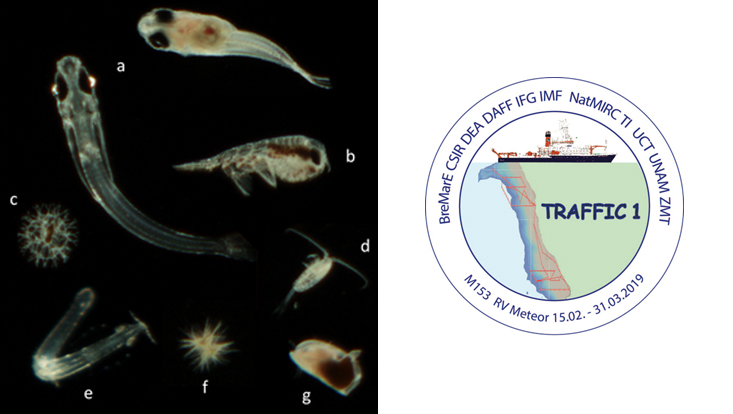
Foto: UHH/IMF
During METEOR cruise 153 in February/Mach 2019 a towed remotely operated vehicle (TRIAXUS) was used to identify physical drivers, nutrients and plankton communities in the northern and southern Benguela Upwelling System.
The TRIAXUS was towed at a speed of 8 knots with a horizontal offset out of the vessel's wake. It undulated vertically between 5 and 200 m, depending on the water depth. The gear is connected via optic fibre cable with the ships laboratory where data from different sensors (CTD, Oxygen Optode, Simrad EK60 Echosounder, Laser Optical Plankton Counter, Turner C6 Cyclops sensors for Chl a, Phycocyanin, Phycoerythrin and Turbidity, Video Plankton Recorder, PAR Sensor, Nitrate Sensor) is recorded.
First results confirm different source water masses (SACW in the north, ESACW in the south), and point to stronger upwelling events in the south. Zooplankton pictures were taken with the video plankton recorder. Using the combination of a video plankton recorder and a TRIAXUS allowed for the first time to take pictures of the diazotrophic Trichodesmium sp. in the Benguela Upwelling System. This blue-green algae is able to use atmospheric nitrogen for primary production and is assumed to live in oligotrophic areas rather than in high productive upwelling systems.

